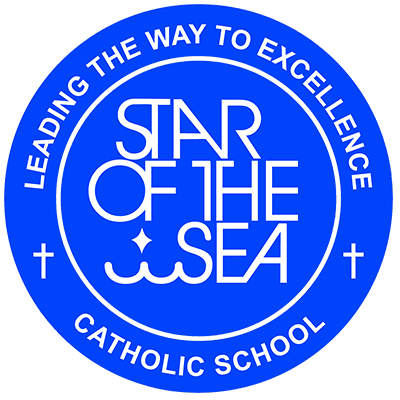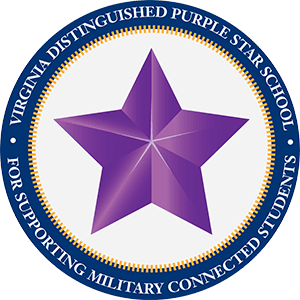Religion
Students attend weekly and monthly mass with the entire student body
Students attend mass on Holy Days of Obligation when school is in session
Students participate in Prayer Services
Students participate in Reconciliation During Advent and Lent
The 6th Grade Religion program covers:
- Building our Catholic faith through an understanding of the Old Testament
- Sharing different prayer experiences as a community
- Learning to respond in prayer, faith, and live to the message of our faith
- Learning the truths of the Catholic faith as they are found in scripture
- Learning about God’s self-Revelation through His creation, the Bible and His Son, Jesus Christ.
- Understanding God’s Covenant formed and built through the Old Testament
- Study the liturgical year; study and celebrate the different seasons including Advent, Christmas, Lent, and Easter
- Understanding of the Church today through the Bible
Mathematics
- Decimals
- Patterns and Variables
- Number Theory and Fractions
- Adding, Subtracting, Multiplying and Dividing Fractions
- Ratios, Proportions, and Percents
- Data Analysis and Graphs
- Geometry and Measurement
- Integers
- Exploring Probability
- Equations and Inequalities
- Estimation
- Apply and Adapt a Variety of Appropriate Strategies to Solve Problems
- Make and Investigate Mathematical Conjectures
Language Arts
- Sixth grade Language Arts follows the Consensus Curriculum guidelines for the Diocese of Richmond. Text books that support instruction include the Loyola Press VOYAGES in English 6, Pearson Prentice Hall LITERATURE Bronze level, and Sadler-Oxford VOCABULARY WORKSHOP (B). English grammar (including conventions, punctuation and capitalization), writing, vocabulary, and literature are the focus areas.
- Students are required to follow the writing process for each piece they create. Using the process helps them discover ideas and develop and organize their thoughts. Students then apply their knowledge of English grammar to the final stages of the process as they revise and edit their work. A variety of types of essays are assigned such as personal narratives, compare and contrast, persuasive, and a research paper. The research paper is done in conjunction with the school science fair. Opportunities for additional cross-curricular writing assignments are also explored.
- Reading skills are developed by examining models and then applying the skills to a variety of types of literature. Selections are chosen from the literature textbook that support student learning. Classic and contemporary novels are used to provide students additional choices for reading that prompt discussions about ideas, themes, and real-world application. Students will communicate their ideas in writing and orally through readings, presentations, and dramatizations.
Science – Life Science
The sixth grade Life Science course examines the wonders of God expressed through His magnificent creation.
- Students are introduced to the basic principles of the scientific method and learn basic tools of scientific inquiry, including hypothesis, analysis, measurement (SI Units and Metric Measurements), graphing, inference, classification, and modeling. These tools provide ways to examine God’s creation in one of its smallest forms, the cell. Students prepare specimens and utilize microscopes to identify important cellular structures and characteristics. They explore important cellular organelles and their roles in the function of a cell. Experiments utilizing genetic crosses and Punnet squares enhance students’ study of DNA and its role in heredity.
- Students also survey more complex organisms such as viruses, microorganisms, fungi, plants, and animals; classify organisms based on modes of energy production and compare their physiology and anatomy. After each laboratory activity, students record their results in a laboratory notebook and write a lab report. Throughout the course, students learn about scientists and classic scientific experiments, and they come to understand the history of scientific discovery, how it has been pursued and the role of the Catholic Church.
Social Studies 6 World History
History
- Earliest Humans
- Mesopotamia
- Ancient Egypt
- Ancient Greece
- Roman Empire
- Ancient Africa, China, India, South America
- Middle Ages
- Renaissance
- Age of Exploration
Geography
- Africa
- Middle East
- Asia
- South America
Technology Integration
- Chromebook/iPad use in Classroom
- SMART Board Lessons
- Mesopotamia Web quest
- Virtual Field Trips
- Ancient Egypt Travel Brochure – Photostory
- Middle Ages Power Point
- Interactive On-line Geography Activities and Maps
- Current Events Blog
- Internet Research
- Digital Portfolio
Spanish 6
In the Spanish grade 6 curriculum emphasis will be placed in developing the speaking, listening reading and writing level skills in a very basic level of communication. At this level, students will learn to communicate in real situations about topics that are meaningful to them. To develop the speaking skills emphasis is placed on the use of Spanish in the classroom.
The student will exchange simple spoken and written information in Spanish.
- Use basic greetings, farewells, and expressions of courtesy both orally and in writing.
- Ask questions and provide responses about different topics such as school, family members, seasons, weather, date and time, foods, and description of self and others.
- Correct intonation and pronunciation, especially when presenting prepared material orally.
- Present rehearsed material in Spanish, dialogues, and songs.
Cultural: The student will develop an awareness of Spanish-speaking cultures.
- Identify some customs and traditions of Spanish-speaking cultures, such as greetings, celebrations, holiday practices
- Recognize the, customs and traditions, of Spanish speakers, such as the concept of family and typical foods.
Students also participate in the following:
Art, Computer, Music, PE/Health

